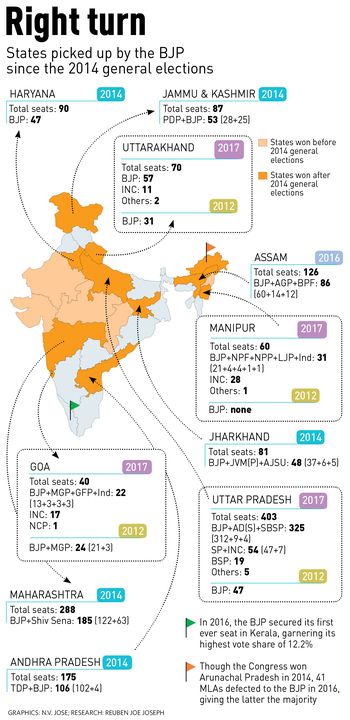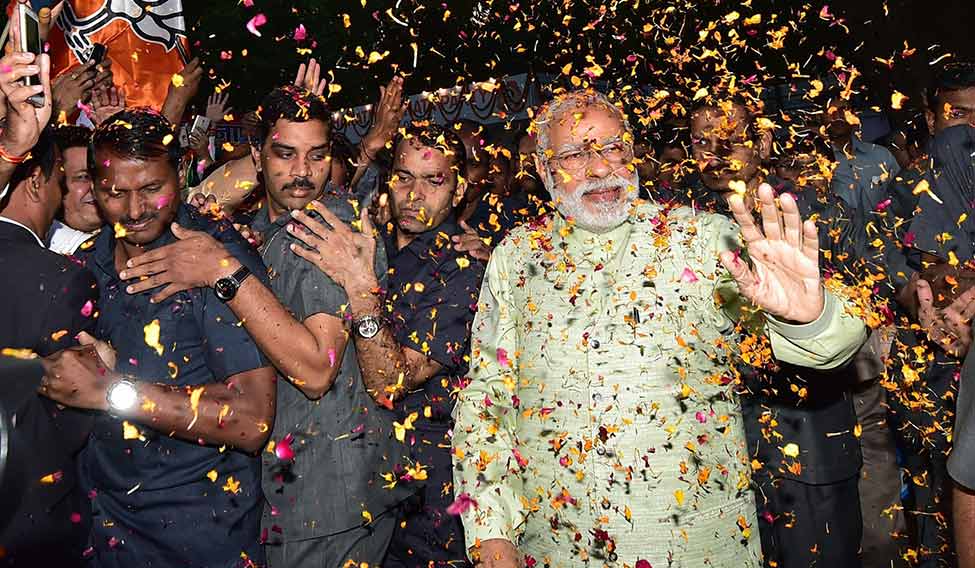Even before Narendra Modi started campaigning in Uttar Pradesh, he knew his government could undergo a big change after the elections. Cabinet heavyweight Nitin Gadkari, who was in charge of the BJP strategy in Goa, had told the prime minister that only defence minister Manohar Parrikar could salvage the party’s chances in the tiny coastal state, which has a special place in Modi’s political journey to Delhi—the BJP conclave held here in September 2013 had confirmed his coronation as the party’s prime ministerial candidate for the 2014 elections.
Parrikar shifting to Goa to lead a coalition government has left the national security apparatus and the Cabinet Committee on Security a bit shaken. But, Finance Minister Arun Jaitley, the cricket aficionado, has returned as the able night-watchman at the helm of the defence ministry.
While Parrikar had been bolder and more energetic than his predecessor A.K. Antony, reforms of the armed forces had not got the necessary impetus to fulfil Modi’s vision of a highly mobile and intimidatory military. The big question is: Now what?
On the political front, Modi—buoyed by the big victories in Uttar Pradesh and Uttarakhand, and the coups in Goa and Manipur—is being lauded as a colossus. BJP president Amit Shah gushed that the prime minister had “emerged as the tallest leader in the country since independence”.
Modi has a window of little more than a year, before the countdown to the 2019 general elections begins. He has already defined his vision—empowerment of the poor and the middle class.

Once the Goods and Services Tax Act is passed in the Rajya Sabha, Modi would go for stronger economic reforms. The Rajya Sabha would see more business, compared with the tardy show from 2014 to mid-2016.
Though there are more assembly elections lined up, Modi’s oratorial skills would be required only in Gujarat later this year. His networking skills, however, would be needed to get a president of his choice elected in June, as the BJP-led National Democratic Alliance has a narrow gap to the halfway mark in the electoral college.
The BJP’s vice presidential candidate would have an easy victory, as the electoral college consists of only members of Parliament, unlike the presidential one, which includes state legislators as well.
On the economic front, Modi has been emboldened by the positive response to his ‘shock treatment’ of the black money plague. He is likely to go for legislation to unearth black money, especially benami assets. The financial investigative agencies would be ordered to go all out after tax evaders. The push for a cashless economy would also get stronger in the coming months.
The government is already set to implement financial reforms, which include hiving off the NPAs of banks, merger of banks, opening up of the insurance sector, and using banks to boost consumption.
The embedding of all governmental schemes and projects under Aadhaar would get expedited, as Modi is satisfied that his linking of social schemes for distributing food, energy, pensions, scholarships and other subsidies has not only widened the net but also plugged leakages.
Modi, who personally monitored and completed more than 200 pending mega projects, would announce big-ticket projects, especially in the energy and infrastructure sectors. He may also take a second look at negotiating free-trade agreements with the European Union, the UK, the US and Japan, which have been hanging fire from the Vajpayee days.
In the socio-political sphere, the Ram Mandir issue would be of prominence. Within the Sangh parivar, there are great expectations that the massive victory in UP would lead to legislative action to start building a Ram temple in Ayodhya. The RSS and the VHP argue that the judgment of the Lucknow Bench of the Allahabad High Court—which divided the disputed land in Ayodha into three parts—could be the basis to persuade Muslims to give up their one-third share, and accept, in return, land for a big mosque in nearby Faizabad.
Even though Amit Shah and other leaders have mentioned the Ram temple in their speeches, Modi has kept his cards close to his chest. He has made no promises so far—except on development and good governance. It would be interesting to see how he deals with the pressure from within.
Soon after the 4-1 victory, Modi pledged to work harder, and called for building a “New India”. Expect a slew of big decisions, and even mega-surprises like the demonetisation he stolidly announced on a cool November evening.










